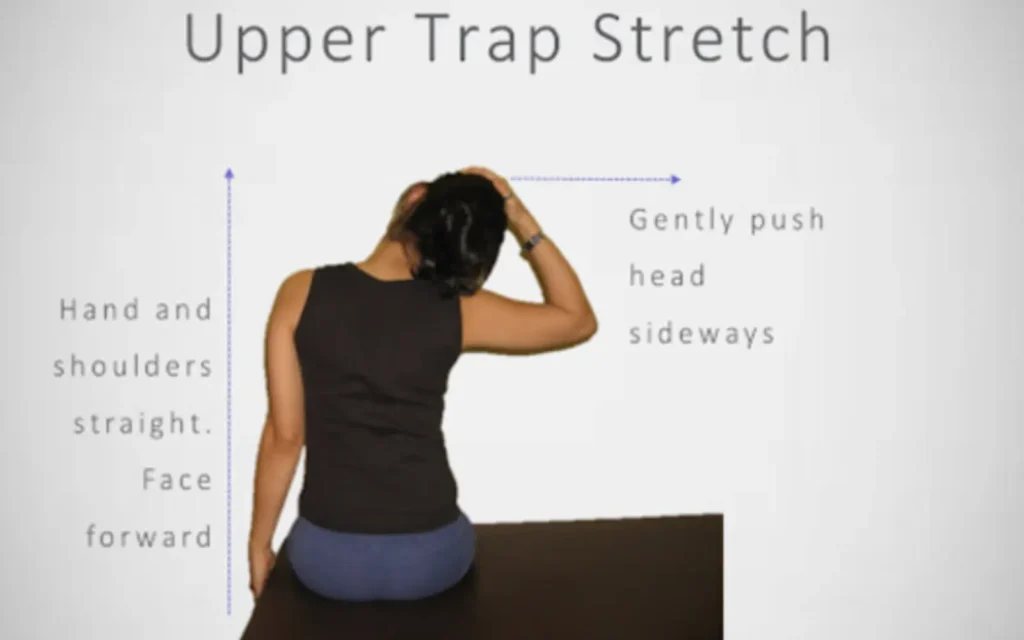You can solve neck pain at home with simple techniques. These methods are easy and effective.
Neck pain affects many people daily. It can result from bad posture, stress, or poor sleeping habits. While severe cases need medical attention, mild to moderate neck pain can be managed at home. Simple exercises, stretches, and lifestyle changes can provide relief.
Understanding the causes and remedies helps in managing pain better. In this guide, you’ll learn easy steps to ease neck pain. These tips are practical and can be done without special equipment. Ready to find relief? Read on to discover how you can solve neck pain at home.
Common Causes
Neck pain can be incredibly frustrating and disrupt daily activities. Understanding the common causes of neck pain is the first step to finding relief. Many people experience neck pain due to poor posture or injuries. By identifying these causes, you can address the root of the problem and find effective home remedies.
Poor Posture
Poor posture is a leading cause of neck pain. Many people spend long hours sitting at desks or looking at screens, which can strain the neck muscles. Here are some ways poor posture contributes to neck pain:
- Slouching: Sitting with a rounded back can put extra pressure on the neck.
- Forward Head Posture: Leaning the head forward while using a computer or phone strains the neck muscles.
- Incorrect Sleeping Position: Sleeping without proper neck support can lead to stiffness and pain.
To improve posture and reduce neck pain, consider these tips:
- Ergonomic Setup: Arrange your workspace so that your screen is at eye level. Use a chair that supports the natural curve of your spine.
- Take Breaks: Stand up and stretch every 30 minutes. This can help alleviate the strain on your neck.
- Neck Exercises: Perform gentle neck stretches to improve flexibility and strength.
By making these changes, you can significantly reduce the likelihood of neck pain caused by poor posture.
Injury Or Strain
Injuries or strains are another common cause of neck pain. Sudden movements or accidents can lead to muscle strains, ligament sprains, or more severe injuries. Common causes of neck injury include:
- Whiplash: This occurs when the neck is suddenly jerked forward and backward, often in car accidents.
- Sports Injuries: Contact sports or improper techniques can result in neck strains.
- Heavy Lifting: Lifting heavy objects without proper form can strain the neck muscles.
To manage neck pain from injuries, try these home remedies:
|
Remedy |
Description |
|
Ice Packs |
Apply ice to the injured area for 15-20 minutes to reduce swelling. |
|
Rest |
Avoid activities that exacerbate the pain. Give your neck time to heal. |
|
Over-the-counter Pain Relief |
Use medications such as ibuprofen or acetaminophen to manage pain. |
If the pain persists or worsens, seek medical advice. Identifying the cause of the injury can help prevent future neck pain.

Home Remedies
Neck pain can be a real nuisance, affecting your day-to-day activities. Fortunately, there are several home remedies that can help alleviate this discomfort. These remedies are simple, effective, and can be done with common household items. Let’s explore some of these remedies to provide relief from neck pain.
Heat Therapy
Heat therapy is a popular method for easing neck pain. It helps to relax and soothe sore muscles. You can use various forms of heat therapy at home, including:
- Heating Pads: Place a heating pad on your neck for 15-20 minutes. Ensure the pad is warm but not too hot to avoid burns.
- Warm Towels: Soak a towel in warm water, wring it out, and place it on your neck. This method is gentle and effective.
- Hot Showers: Stand under a hot shower, letting the warm water hit your neck. This helps to relax the muscles and ease tension.
Here’s a quick comparison of different heat therapy methods:
|
Method |
Duration |
Effectiveness |
|
Heating Pads |
15-20 minutes |
High |
|
Warm Towels |
15-20 minutes |
Moderate |
|
Hot Showers |
As needed |
Moderate |
Heat therapy increases blood flow to the affected area. This promotes healing and reduces stiffness. Always use heat therapy with caution. Never apply heat directly to the skin for long periods. Always use a barrier like a cloth or towel.
Cold Therapy
Cold therapy, or cryotherapy, is another effective method for neck pain. It helps to reduce inflammation and numb sharp pain. Here are some ways to apply cold therapy:
- Ice Packs: Wrap an ice pack in a cloth and place it on your neck. Leave it on for 15-20 minutes.
- Frozen Vegetables: In a pinch, a bag of frozen peas or corn works well. Wrap it in a cloth and apply to the neck.
- Cold Compresses: Use a cloth soaked in cold water. Wring out the excess water and place it on your neck.
Here’s a quick comparison of different cold therapy methods:
|
Method |
Duration |
Effectiveness |
|
Ice Packs |
15-20 minutes |
High |
|
Frozen Vegetables |
15-20 minutes |
Moderate |
|
Cold Compresses |
15-20 minutes |
Moderate |
Cold therapy slows blood flow to the affected area. This helps to reduce swelling and inflammation. Always use a cloth or towel to protect your skin from direct contact with ice. Avoid prolonged use of cold therapy to prevent skin damage.
Stretching Exercises
Neck pain can be a common issue due to poor posture, long hours at a desk, or even stress. Finding relief at home is possible with some simple stretching exercises. These exercises can help reduce tension, improve mobility, and prevent future discomfort.
Neck Rolls
Neck rolls are a gentle way to stretch and relax the muscles in your neck. This exercise can help improve your range of motion and reduce stiffness. Follow these steps for effective neck rolls:
- Sit or stand up straight.
- Relax your shoulders.
- Gently drop your chin toward your chest.
- Slowly roll your head to the right, making a half-circle.
- Continue rolling your head back, bringing your left ear toward your left shoulder.
- Complete the circle by bringing your chin back to your chest.
- Repeat the motion in the opposite direction.
- Perform 5-10 rolls in each direction.
Be sure to move slowly and avoid any jerky movements. Listen to your body and stop if you feel any pain. Consistency is key. Doing neck rolls daily can help you maintain a pain-free neck.
Side Stretches
Side stretches target the sides of your neck and can help ease tension. This exercise is simple and can be done anywhere. Here’s how to perform side stretches:
- Sit or stand with your back straight.
- Relax your shoulders.
- Gently tilt your head to the right, bringing your ear toward your shoulder.
- Hold the stretch for 15-30 seconds.
- Return to the starting position.
- Repeat on the left side.
- Perform 3-5 stretches on each side.
To deepen the stretch, you can gently press down on your head with your hand. Remember to breathe deeply during the stretch to help your muscles relax. Doing side stretches regularly can help prevent stiffness and improve flexibility.

Strengthening Exercises
Neck pain can be a real nuisance. It affects your daily activities and overall well-being. Many people experience neck pain due to poor posture, stress, or injury. One effective way to alleviate neck pain is through strengthening exercises. These exercises help improve muscle strength, flexibility, and posture, reducing discomfort over time.
Resistance Bands
Resistance bands are a versatile tool for strengthening neck muscles. They are affordable, portable, and easy to use at home. Using resistance bands can help you build strength in the neck and shoulders, which can alleviate pain and prevent future issues.
Here are some simple exercises you can do with resistance bands:
- Neck Extension: Sit or stand up straight. Place the resistance band around the back of your head. Hold the ends of the band with both hands. Gently push your head backward against the resistance of the band. Hold for a few seconds and return to the starting position. Repeat 10 times.
- Neck Flexion: Sit or stand up straight. Place the resistance band on your forehead. Hold the ends of the band with both hands. Gently push your head forward against the resistance of the band. Hold for a few seconds and return to the starting position. Repeat 10 times.
- Lateral Neck Flexion: Sit or stand up straight. Place the resistance band on the side of your head. Hold the ends of the band with one hand. Gently push your head sideways against the resistance of the band. Hold for a few seconds and return to the starting position. Repeat 10 times on each side.
These exercises target different muscles in the neck. They help improve strength and flexibility. Always start with a light resistance band and gradually increase the resistance as your muscles get stronger.
Isometric Exercises
Isometric exercises are a great way to strengthen neck muscles without moving your head. These exercises involve holding a position and engaging the muscles. This helps build strength and endurance. They are particularly useful if you have limited mobility or experience pain with movement.
Here are some effective isometric exercises for neck pain:
- Isometric Neck Extension: Sit or stand up straight. Place your hands on the back of your head. Gently push your head backward into your hands without moving your head. Hold for 10 seconds and release. Repeat 10 times.
- Isometric Neck Flexion: Sit or stand up straight. Place your hands on your forehead. Gently push your head forward into your hands without moving your head. Hold for 10 seconds and release. Repeat 10 times.
- Isometric Lateral Neck Flexion: Sit or stand up straight. Place your hand on the side of your head. Gently push your head sideways into your hand without moving your head. Hold for 10 seconds and release. Repeat 10 times on each side.
Isometric exercises are easy to perform and require no equipment. They can be done anywhere, making them a convenient option for managing neck pain at home. These exercises help improve muscle strength and stability, reducing the likelihood of future neck pain.
Ergonomic Adjustments
Neck pain is a common issue faced by many people. It can be caused by poor posture, long hours at a desk, or even the way you sleep. One of the most effective ways to solve neck pain at home is by making ergonomic adjustments. These adjustments can help you maintain a healthy posture and reduce strain on your neck.
Workstation Setup
Creating an ergonomic workstation setup is essential for reducing neck pain. Here are some tips to help you set up your workspace correctly:
- Monitor Height: Your monitor should be at eye level. This helps keep your neck in a neutral position.
- Chair Support: Use a chair with good lumbar support. Adjust the height so your feet rest flat on the floor.
- Keyboard and Mouse: Place your keyboard and mouse at a comfortable height. Your elbows should be at a 90-degree angle.
Here’s a simple table to help you understand the ideal ergonomic setup:
|
Component |
Ideal Position |
|
Monitor |
Eye level, about 20-30 inches away |
|
Chair |
Good lumbar support, feet flat on the floor |
|
Keyboard |
Elbows at a 90-degree angle |
|
Mouse |
Close to the keyboard, same height |
Remember to take regular breaks. Stand up, stretch, and move around every 30 minutes. This can help relieve tension in your neck and shoulders.
Sleeping Position
Your sleeping position can also affect neck pain. Follow these tips to ensure a better night’s sleep without neck discomfort:
- Pillow Height: Use a pillow that keeps your neck aligned with your spine. Avoid using too high or too low pillows.
- Sleeping on Your Back: Sleeping on your back is the best position for your neck. Use a small pillow under your neck for support.
- Sleeping on Your Side: If you sleep on your side, use a thicker pillow to keep your neck aligned with your spine.
Consider these additional tips for a better sleeping position:
- Avoid Stomach Sleeping: Sleeping on your stomach can strain your neck and spine.
- Use a Neck Pillow: A neck pillow can provide additional support and help maintain the natural curve of your neck.
Changing your sleeping position might take time. But the benefits for your neck health are worth the effort. Consistent practice can lead to a significant reduction in neck pain.

Relaxation Techniques
Dealing with neck pain can be challenging, but there are effective ways to address it from the comfort of your home. Relaxation techniques can significantly alleviate neck tension. These methods are simple yet powerful, promoting both physical and mental well-being.
Deep Breathing
Deep breathing is a straightforward method to reduce neck pain. It helps relax the muscles and improves blood circulation. Follow these steps to practice deep breathing:
- Sit or lie down in a comfortable position.
- Close your eyes and take a deep breath in through your nose.
- Hold your breath for a few seconds.
- Exhale slowly through your mouth.
- Repeat this process for about 5-10 minutes.
Incorporate this technique into your daily routine. Deep breathing also reduces stress, which can contribute to neck pain. You can also try breathing exercises like:
- Diaphragmatic breathing
- 4-7-8 breathing
- Box breathing
|
Exercise |
Method |
|
Diaphragmatic breathing |
Breathe deeply using the diaphragm, not the chest. |
|
4-7-8 breathing |
Inhale for 4 seconds, hold for 7, and exhale for 8. |
|
Box breathing |
Inhale, hold, exhale, and hold each for 4 seconds. |
Practice these exercises regularly to manage neck pain effectively.
Meditation
Meditation is another excellent technique for relieving neck pain. It helps calm the mind and reduces muscle tension. Here’s a simple guide to start meditating:
- Find a quiet, comfortable place to sit.
- Close your eyes and focus on your breath.
- Inhale deeply and exhale slowly.
- Clear your mind of distractions.
- Continue for at least 10-15 minutes.
Regular meditation can improve overall well-being. It also enhances your ability to manage pain. You can also explore different types of meditation:
- Mindfulness meditation
- Body scan meditation
- Guided meditation
Each type offers unique benefits. For example, mindfulness meditation helps you stay present. Body scan meditation focuses on relaxing different body parts, starting from your head down to your toes. Guided meditation involves listening to a narrator who helps guide your thoughts.
Incorporate meditation into your daily routine. It’s a valuable tool for managing neck pain and improving your overall quality of life.
When To Seek Help
Neck pain can often be treated at home with rest, gentle exercises, and over-the-counter pain relief. But sometimes, neck pain can be a sign of something more serious. Knowing when to seek help is crucial to prevent further complications.
Persistent Pain
When neck pain does not go away after a few days, it may be time to see a doctor. Persistent pain can indicate underlying problems that need professional attention. Here are some signs that you should seek help for persistent neck pain:
- Lasting more than a week: Pain that continues for more than seven days should be evaluated by a healthcare provider.
- Severe discomfort: If the pain is intense and does not improve with rest or over-the-counter medication, consult a doctor.
- Recurring pain: Frequent episodes of neck pain could signify a chronic condition.
- Limited mobility: Difficulty moving your neck or turning your head can be a serious issue.
If you experience any of these symptoms, schedule an appointment with your healthcare provider. They can perform necessary tests and recommend treatments to alleviate your pain.
Nerve Symptoms
Nerve symptoms are another sign that you should seek professional help. These symptoms can indicate nerve damage or compression, which can be severe. Pay attention to the following signs:
- Numbness or tingling: Feeling numbness or tingling in your arms, hands, or fingers can be a sign of nerve involvement.
- Weakness: Muscle weakness in the arms or hands is a red flag that needs immediate attention.
- Radiating pain: Pain that spreads down your arm may indicate a pinched nerve.
- Loss of coordination: Difficulty with fine motor skills, such as buttoning a shirt, may be due to nerve issues.
These symptoms should not be ignored. Nerve problems can lead to permanent damage if not treated promptly. Contact your healthcare provider if you experience any of these signs.

Lifestyle Changes
Dealing with neck pain can be challenging, especially if it disrupts daily activities. Making some lifestyle changes can help manage and reduce this pain effectively. By incorporating a few healthy habits into your routine, you can find relief and improve your overall well-being.
Regular Exercise
Engaging in regular exercise is crucial for maintaining neck health. Physical activity helps strengthen muscles and improve flexibility, reducing the risk of neck pain. Here are some exercises that can be beneficial:
- Neck Stretches: Gently tilt your head towards each shoulder, holding for 15-30 seconds. Repeat several times daily.
- Shoulder Shrugs: Lift your shoulders towards your ears, hold for a few seconds, and then release. Do this 10-15 times.
- Chin Tucks: Sit or stand up straight. Pull your chin towards your neck without moving your head forward. Hold for 5 seconds and repeat 10 times.
Incorporating these exercises into your daily routine can help alleviate tension in the neck and shoulders. Additionally, consider other forms of exercise such as:
|
Type of Exercise |
Benefits |
|
Yoga |
Improves flexibility and reduces stress. |
|
Swimming |
Strengthens muscles with minimal strain on joints. |
|
Walking |
Enhances overall body movement and posture. |
Remember to start slowly and gradually increase the intensity to avoid any potential strain. Always listen to your body and stop if you feel any discomfort.
Hydration
Staying hydrated is essential for overall health and can significantly impact neck pain. Proper hydration helps maintain the elasticity of spinal discs, which can prevent discomfort and pain.
Here are some tips to ensure you stay hydrated:
- Drink at least 8 glasses of water daily. This can vary depending on your activity level and climate.
- Carry a water bottle with you to remind yourself to drink throughout the day.
- Include hydrating foods in your diet, such as fruits and vegetables. Cucumbers, watermelons, and oranges are great options.
Dehydration can lead to muscle stiffness and cramps, exacerbating neck pain. Pay attention to signs of dehydration, such as dry mouth, fatigue, and dark urine. If you experience these symptoms, increase your water intake.
By making a conscious effort to stay hydrated, you can support the health of your neck and reduce pain. Simple changes to your daily routine can make a big difference.
Preventive Measures
Neck pain can be a real hassle, affecting your daily activities and overall well-being. To avoid dealing with this discomfort, it’s important to take preventive measures. These simple steps can help you keep neck pain at bay and maintain a healthy lifestyle.
Daily Stretching
Incorporating daily stretching into your routine can significantly reduce the risk of neck pain. Stretching helps to maintain flexibility and relieve tension in your neck muscles. Here are some simple stretches you can do at home:
- Chin Tucks: Sit or stand with your back straight. Gently tuck your chin towards your chest and hold for 5 seconds. Repeat 10 times.
- Neck Rotations: Turn your head to the right as far as you can, then to the left. Hold each position for 5 seconds. Repeat 10 times on each side.
- Side Bends: Tilt your head towards your right shoulder, hold for 5 seconds, then repeat on the left side. Do this 10 times on each side.
It’s essential to perform these stretches slowly and gently to avoid any strain. Consistency is key, so make sure to stretch every day. You can also include other stretches that target different muscle groups to improve overall flexibility.
Stretching not only helps in preventing neck pain but also enhances blood circulation. Improved blood flow ensures that your muscles get the nutrients they need, reducing the chances of stiffness and discomfort.
Frequent Breaks
Sitting for long periods can contribute to neck pain. Taking frequent breaks can make a big difference. Whether you’re working at a desk or watching TV, getting up and moving around helps to relieve pressure on your neck muscles. Here are some tips for taking effective breaks:
- Set a Timer: Use a timer to remind yourself to take a break every 30 minutes. Stand up, stretch, or walk around for a few minutes.
- Change Positions: If you sit in the same position for a long time, your muscles can become tense. Try to change your sitting position frequently to avoid stiffness.
- Practice Good Posture: Ensure your workspace is ergonomically friendly. Keep your computer screen at eye level and sit with your back straight.
Taking regular breaks not only helps in preventing neck pain but also improves overall productivity. Short breaks can refresh your mind and reduce mental fatigue.
Remember, prevention is better than cure. By integrating these preventive measures into your daily routine, you can minimize the risk of neck pain and enjoy a healthier, pain-free life.

Complementary Therapies
Neck pain can be a real nuisance, affecting your daily activities and overall well-being. While there are several ways to deal with neck pain at home, complementary therapies offer a holistic approach to relief. These therapies not only help in reducing pain but also promote overall health and relaxation. Let’s dive into two effective complementary therapies: massage and acupuncture.
Massage
Massage therapy is a popular and effective method for alleviating neck pain. It involves manipulating the muscles and tissues in the neck to relieve tension and improve circulation. Here are some benefits and techniques:
- Reduces muscle tension: Massage helps in loosening tight muscles, which can be a major cause of neck pain.
- Improves blood flow: Enhanced circulation brings more oxygen and nutrients to the affected area, aiding in faster recovery.
- Promotes relaxation: The soothing effect of massage helps in reducing stress and anxiety, which can also contribute to neck pain.
Here are some common types of massage techniques for neck pain:
|
Technique |
Description |
|
Swedish Massage |
Uses long, gliding strokes to reduce muscle tension and improve circulation. |
|
Deep Tissue Massage |
Targets deeper layers of muscles and connective tissues to relieve chronic pain. |
|
Trigger Point Therapy |
Focuses on specific points in the muscles that are causing pain, applying pressure to release tension. |
To get the most out of a massage, it is essential to find a qualified therapist. You can also try self-massage techniques using tools like foam rollers or massage balls. Consistency is key. Regular sessions can significantly improve your neck pain over time.
Acupuncture
Acupuncture is an ancient Chinese therapy that involves inserting thin needles into specific points on the body. It is believed to balance the body’s energy flow, known as “Qi,” and promote healing. Acupuncture has gained popularity for its effectiveness in treating neck pain.
Here are some ways acupuncture can help:
- Reduces inflammation: Acupuncture can help reduce swelling and inflammation in the neck muscles.
- Alleviates pain: It triggers the release of endorphins, the body’s natural painkillers, providing relief from pain.
- Improves mobility: Acupuncture can enhance the range of motion in the neck, making daily activities easier.
During an acupuncture session, the practitioner will assess your condition and insert needles into specific points. The needles are usually left in place for about 20-30 minutes. You may feel a slight tingling sensation, but it is generally not painful.
To ensure safety and effectiveness, it is important to seek treatment from a licensed acupuncturist. Regular sessions can provide significant relief. Acupuncture is often combined with other therapies for better results.
Frequently Asked Questions
What Are Common Causes Of Neck Pain?
Neck pain can result from poor posture, muscle strain, or sleeping awkwardly. Stress and injuries also contribute. Identifying the cause helps in choosing the right treatment.
How Can I Relieve Neck Pain At Home?
Apply ice or heat, use over-the-counter pain relievers, and practice gentle stretching exercises. Maintaining good posture and using a supportive pillow can help too.
Are There Exercises To Reduce Neck Pain?
Yes, gentle neck stretches and strengthening exercises can alleviate pain. Try chin tucks, side-to-side rotations, and shoulder shrugs for relief.
Does Massage Help In Neck Pain?
Yes, a gentle massage can reduce tension and improve blood flow. This can alleviate pain and promote relaxation.
Conclusion
Neck pain can disrupt daily life. Simple home remedies offer relief. Stretching exercises help. Apply ice or heat packs. Maintain good posture. Regular breaks from screens reduce strain. Over-the-counter pain relief can help. Try gentle massages. Using supportive pillows improves sleep.
Remember to stay hydrated. Consistent efforts lead to improvement. Seek medical advice if pain persists. Take action today for a pain-free neck.

